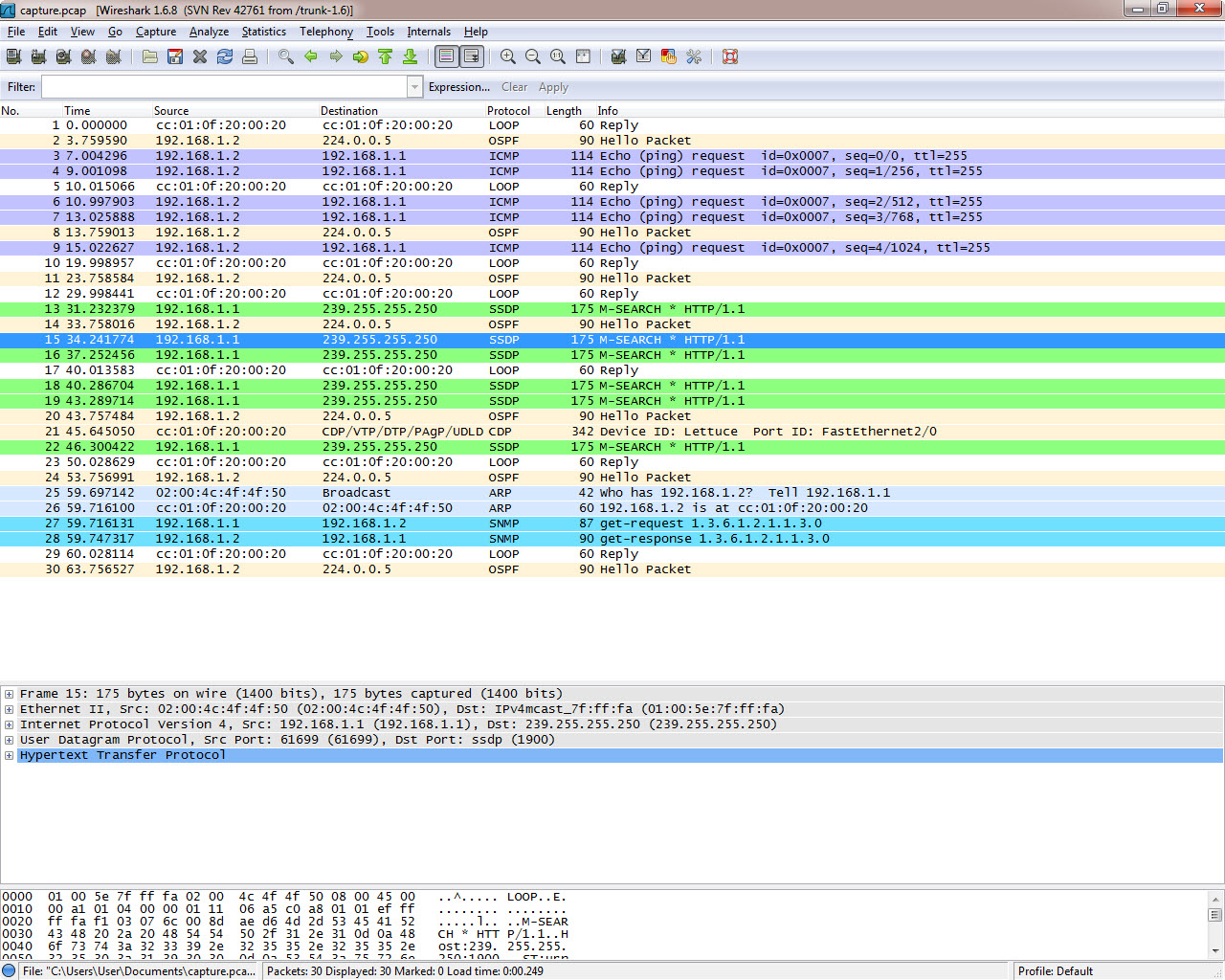

These activities will show you how to use Wireshark to capture and analyze Dynamic Host Configuration Protocol (DHCP) traffic. :) 2) must not require cygwin (which knocks a lot of them out) 3) must work on windows. Wireshark is a free and open source packet analyzer used for network troubleshooting and analysis.
#Wireshark capture full#
In addition, a full description of the filter syntax is available in the Pcap-CaptureFilters hyperlink. The Wireshark wiki Tools page lists many packet capture related tools, among them some tools that can replay packets such as Bit-Twist, Pla圜ap, Scapy, tcpreplay and several others. The path specified must exist.Ī full description of dumpcap options can be found in the Wireshark root folder, specifically, in the file dumpdcap.html (C:/Program Files/Wireshark/dumpcap.html) pcap is the location to write the output files. B n, is the size of the kernel buffer to use. b files:n, is the number of files of the above size to create b duration:n, is the amount of time to run b filesize:n, is the file size to create in KB q = quiet mode, eliminates displaying packet count i = interface number (determined by entering dumpcap -D in a command prompt) If you need a capture filter for a specific protocol, have a look for it at the ProtocolReference. For example, the following command captures only DNS traffic destined to or coming from 169.16.22.120:ĭumpcap -i 3 -q -b duration:3600 -b files:25 -f "host 169.16.22.120" -w d:\traces\mytrace.pcap Wireshark uses the same syntax for capture filters as tcpdump, WinDump, Analyzer, and any other program that uses the libpcap/WinPcap library. We can also specify filters to limit the types of traffic captured by dumpcap. The example below shows how we can instruct dumpcap to maintain a rotating record of the last 24 hours worth of traffic:ĭumpcap -i 3 -q -b duration:3600 -b files:25 -w d:\traces\mytrace.pcap Use the following display filter to show all packets that contain the specific IP in either or both the source and destination columns: ip.addr 192.168.2.11. And to avoid eventually filling the entire hard disk with capture files, we can include the files parameter to set up a ring buffer: Once the maximum number of files have been saved, the oldest file is deleted and a new empty file is created in its place. We use the duration keyword in place of filesize to specify a length of time (in seconds) to spend filling each file (for example, one hour, or 3600 seconds). To explicitly specify the PATH, you may need to include the path portion in double quotes (e.g.

In order for the system to find dumpcap, you will need to include it as part of the Windows PATH environment variable, or explicitly specify the path. It resides in the Wireshark root folder (e.g. To capture Wireshark data, you will need to use “dumpcap” which is a command line utility installed as part of Wireshark.
#Wireshark capture driver#
How to use Wireshark (on Windows) to capture a driver or network issue that may only occur very infrequently, for example, to capture data on an issue which may occur only once a month.


 0 kommentar(er)
0 kommentar(er)
